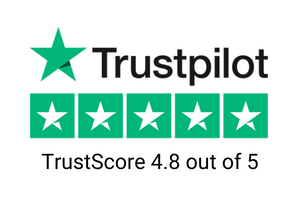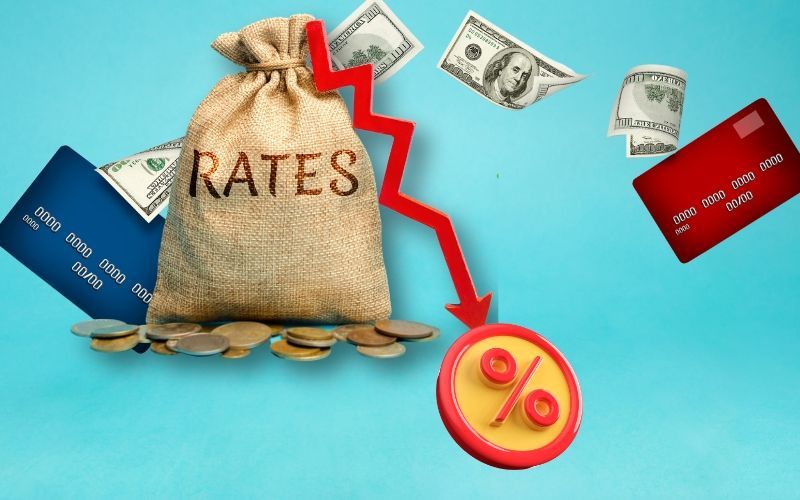March 29, 2024
0% Balance Transfers for Debt Freedom

Disclaimer: We are not qualified legal or tax professionals and are not giving advice. Always speak with a qualified professional before making any legal or financial decisions.
Struggling with high-interest credit card debt? You're not alone. The good news is, there's a strategic solution: 0% APR balance transfer credit cards. This guide dives deep into how you can leverage these offers to significantly reduce your interest payments and accelerate your debt payoff.
From understanding what balance transfers are to choosing the best card for your needs, we provide a step-by-step approach to make an informed decision.
With expert strategies and an overview of top-rated cards, our goal is to empower you to break free from the burden of debt more efficiently. Ready to start saving? Let’s explore how a 0% introductory APR could be your ticket to financial freedom.
Don't want to read through? Speak to a debt specialist right now.
Understanding 0% APR Balance Transfers
A 0% APR balance transfer can be a smart financial move for credit card users looking to pay off debt quickly and avoid accumulating additional interest charges. By transferring an existing balance from a high-interest credit card to a new card with a 0% promotional introductory rate, you can save hundreds or even thousands of dollars in interest fees.
What is a 0% APR Balance Transfer?
A 0% APR balance transfer allows you to move an outstanding balance from one credit card to a new card that offers a 0% introductory Annual Percentage Rate (APR) for a set period of time. This introductory 0% APR applies to balance transfers, not new purchases.
During this intro period, which typically lasts between 6 and 21 months, any payments made toward the transferred balance go entirely toward reducing the principal. No interest accrues as long as the promotional 0% rate remains in effect.
How Do Balance Transfers Work to Pay Off Debt Faster?
By transferring debt to a card with a lower promotional rate, more of your payment goes toward paying down your actual balance rather than being eaten up by high-interest fees. This allows you to become debt-free more quickly.
For example, let's say you owe $5,000 on a credit card with a 19.99% APR. If you only paid the minimum due each month, it would take over 17 years to pay off the balance, and you'd pay $5,859 in interest charges.
However, if you transferred that $5,000 balance to a new card with a 0% intro APR for 12 months, you could pay off the entire balance in one year by making 12 payments of $417 per month. You'd pay $0 in interest, saving nearly $6,000.
Calculating Potential Interest Savings with a 0% Balance Transfer
Whether or not a 0% balance transfer makes sense depends largely on:
- Your current credit card balance
- The interest rate you're paying
- The balance transfer fee on the new card
- The length of the 0% introductory period
You can use a balance transfer calculator to get an estimate of how much you could potentially save in interest by transferring your balances to a card with a 0% promotional APR. Every situation is different, so run the numbers for your specific balances and credit cards.
Generally speaking, the higher your current interest rate and balance amount, the more worthwhile a 0% balance transfer becomes. Just be sure to pay close attention to balance transfer fees, which typically range from 3-5% of the total transfer amount.
Length of 0% Introductory APR Periods
The longer the 0% term, the more time you have to pay off your transferred balances before interest kicks in again. However, longer 0% offers also tend to come with higher balance transfer fees. A best balance transfer credit cards offer introductory 0% APR periods from 6 months up to 21 months.
It's important not to bite off more than you can chew. Be realistic about how long it will take you to pay off your debt. Don't transfer more than you can reasonably afford to pay off before the intro period ends. Otherwise, you'll still get stuck paying interest on your remaining balance.
Aim to make payments well above the minimum due and pay off the entire transferred balance within the intro 0% APR timeframe. This ensures you maximize the interest savings from the balance transfer.
Balance Transfer Fees
While intro 0% APR offers provide tremendous interest savings, balance transfers aren't entirely free. The vast majority of credit cards charge a balance transfer fee, typically between 3-5% of the total amount transferred.
For a $5,000 balance transfer, a 3% fee would equal $150, while a 5% fee would total $250. That's not insignificant, so factor transfer fees into your calculations when determining if a 0% balance transfer makes sense for your situation.
Certain credit cards offer low introductory balance transfer fees or waive them entirely for a limited time. This can provide even greater savings when moving a credit card balance.
Step-by-Step Guide to 0% Balance Transfers
Completing a 0% balance transfer involves more than just moving debt from one card to another. Follow these key steps for a smooth and successful balance transfer process.
Choosing a 0% Balance Transfer Credit Card
Not all balance transfer cards are created equal. Compare offers and select a card that best fits your needs and financial situation.
Compare 0% Intro Period Lengths
Cards with longer 0% intro APR terms give you more time to pay off your balance interest-free. Opt for at least 12 months, with 18-21 months being ideal.
Evaluate Regular APRs
Check the regular APR that kicks in after the intro period ends. You may carry a remaining balance, so a lower ongoing APR saves money.
Review Balance Transfer Fees
Most cards charge a fee of 3-5% of the total transfer amount. Find the lowest fee that still comes with a long 0% term.
Consider Rewards and Perks
Some cards offer cash back, points, or travel rewards on purchases. This provides long-term value beyond the initial balance transfer.
Verify Transfer Partner Rules
You can't transfer debt between cards from the same issuer. For example, you can't go from one Chase card to another Chase card.
Understanding Credit Score Requirements
The best balance transfer offers are reserved for those with good to excellent credit, generally FICO scores above 690. If your score is in the fair range (typically below 640), you'll have a harder time qualifying.
Before applying, check your credit reports and FICO credit scores:
Errors or discrepancies
Your reports can negatively impact your score. Dispute any mistakes with the bureaus before applying for a new card.
High credit utilization rate
This indicates you're using too much of your available credit, which drags down your score. Paying down balances before applying helps.
Recent credit inquiries
Other applications may make lenders less likely to approve you. Avoid applying for multiple credit cards in a short period of time.
Completing the Balance Transfer Application
The application process for a balance transfer card is similar to any other credit card application:
- Provide personal information like your name, date of birth, Social Security number, and physical address.
- Submit required financial information, including your annual income, housing payments, and existing debts.
- A hard credit inquiry will be performed by the card issuer, which may cause a small temporary drop in your credit scores. This is standard for all new credit applications.
- If approved, you'll receive confirmation of your new credit limit and balance transfer terms. You can then move forward with initiating the balance transfer.
Initiating the Balance Transfer
Contact the new card issuer after approval to request a balance transfer.
You'll need to provide:
- The payoff amount you wish to transfer
- The account number of the old credit card
- Any other details required by the card issuer (mailing address, payment mailing address, etc.)
The card issuer will handle contacting your old bank and facilitating the balance transfer behind the scenes. Continue making your normal monthly payments until the transfer is complete.
Waiting for Balance Transfer Completion
It takes some time for balance transfers to be fully processed.
The transfer won't happen instantaneously after you initiate it:
- Many card issuers cite a timeframe of 7-10 days for balance transfers to complete, but it can take up to several weeks.
- Check your old card account frequently to confirm when the payoff posts and the balance reflects $0.
- Until then, keep paying the minimum each month to avoid late fees or interest charges.
Once complete, your transferred balance will appear on your new card, ready for you to start paying down. Enjoy the savings from your new 0% intro APR!
Avoiding Common 0% Balance Transfer Mistakes
While balance transfers allow responsible cardholders to save substantially.
It's important to avoid missteps:
Pay all bills on time
Just one late payment can result in the loss of your 0% APR intro offer, leading to expensive interest fees. Set up autopay if possible.
Don't rack up more debt on old cards
It negates the purpose of transferring a balance if you continue charging purchases on the old card. Leave it socked away until it pays off.
Transfer only what you can pay off
Don't bite off more than you can chew during the intro period. Make a realistic payoff plan before transferring any balances.
Read the fine print
Understand the balance transfer offer terms, fees, and expiration date for the 0% intro APR before submitting your application.
Alternatives to Balance Transfers
While 0% balance transfer credit cards can provide significant interest savings, they aren't right for everyone. Before applying, consider these alternative strategies for paying off credit card debt.
Pay More Than the Minimum Due
When you only pay the minimum due each month, very little goes toward reducing your principal balance. You're mainly just paying off interest. Overpay on your monthly payments to pay down debt faster without opening a new account.
You Must:
- Use a credit card payoff calculator to determine how much extra you should pay above the minimum to reach your payoff goal by a target date. Even an extra $20-50 each month makes a difference over time.
- If monthly cash flow is tight, look at cutting discretionary spending or redirecting bonus income like tax refunds to make space in your budget for higher credit card payments.
Use a Credit Card Payoff Calculator
Before you apply for a balance transfer card, model different payment scenarios with an online payoff calculator. You may be surprised how quickly you can eradicate debt just by overpaying each month.
Input your actual balance, APR, and estimated monthly payment. See how different payment amounts above the minimum affect your payoff timeframe and interest costs. The results might motivate you to pay more aggressively without doing a balance transfer.
Ask Your Issuer for a Lower Interest Rate
If you've been a long-time customer with an excellent payment history, ask your credit card company to reduce your interest rate. They want to retain reliable borrowers. Emphasize your loyalty and consistent on-time payments.
A rate reduction of even 2-5 percentage points makes your monthly payments more impactful in chipping away at your overall balance. If they agree, you get lower rates without applying for a new card.
Take Out a Personal Loan
Compare your credit card APR to interest rates from online lenders and your local credit union. You may be able to qualify for a personal loan with a lower rate than your current card and pay off your balance faster.
- Banks and peer-to-peer lending networks advertise rates starting around 5-7% for borrowers with good credit.
- Paying off cards with a lower-rate installment loan simplifies things into a predictable monthly payment.
- However, watch out for origination fees from some lenders that may cut into interest savings from the loan.
Improve Your Credit Before Reapplying
If you don't initially qualify for a top 0% balance transfer offer, take steps to improve your credit profile and try again in 6 months.
- Pay all bills on time and keep credit utilization low.
- Don't apply for new financing or credit cards in the interim.
- Contact creditors to correct any inaccurate information on your credit reports.
With a credit boost, you become eligible for better card terms that make balance transfers more advantageous. Patience and diligent credit management lead to the best offers.
Maximize Savings with Balance Transfers
Getting approved for a 0% balance transfer credit card is only the first step. You need to leverage the introductory 0% APR strategically during the promotional period to achieve maximum interest savings.
Make a Budget for Aggressive Monthly Payments
Creating a budget is crucial for freeing up cash flow to pay down your transferred balance each month before the 0% APR period expires:
- Track your income and expenses to analyze where you can trim spending. Dining out, entertainment, and impulse purchases are good categories to cut.
- Make paying off your credit card debt your top financial priority. Direct as much spare money as possible toward monthly payments.
- Build a realistic budget with higher payments baked in. You may need to make sacrifices in order to make room for required debt payments.
- Use budgeting tools and spreadsheets to plan your spending and allocate additional funds to balance payoff.
Pay More Than the Minimum Amount Due
Minimum payments only cover interest fees, not your actual balance.
Paying extra speeds your payoff:
- Review credit card statements to understand how minimum payments are calculated. They offer little principal reduction.
- Add $20-50 on top of the minimum whenever possible. This adds up significantly over the 0% intro period.
- Treat monthly balance payments as non-negotiable household expenses in your budget just like rent or utilities.
- Calculate different monthly payment scenarios with a payoff calculator to create a target payment.
Use Windfalls as Extra Payments
Unexpected cash infusions provide opportunities for lump sum prepayments toward your principal.
- Put tax refunds, bonuses, rebates, and monetary gifts toward your credit card balance.
- Every little bit counts when trying to lower your overall balance before interest hits.
- Avoid temptation to spend windfalls on purchases. Redirect every possible dollar to debt elimination.
Set Calendar Reminders for Transfer Expiration
Don't let your 0% offer expire without paying off your balance:
- Note the exact month your intro APR ends and set multiple advance notifications.
- Review your remaining balance with each reminder and adjust your monthly payments if needed to pay off in time.
- Contact the issuer if you think you may need to transfer remaining balances again to a new 0% offer after your term expires.
Automate Payments to Avoid Missed Payment Fees
Set up autopay through your credit card account online or via mobile app:
- Have at least the minimum due automatically withdrawn monthly to prevent late fees.
- Schedule additional automatic payments at mid-month for any extra budgeted amounts.
- Autopay protects your credit score and 0% offer by ensuring payments post on time every month.
Tips for Choosing the Right Balance Transfer Card
With so many 0% APR balance transfer cards on the market, it can be overwhelming to select the best one for your needs.
Consider these key factors when comparing your options:
Evaluate Your Credit Score and Profile
- Check your credit reports and FICO scores before applying
- Income, existing debts, and past payment history determine your eligibility
- Opt for cards offering terms that align with your credit profile
Weigh Interest Savings Against Fees
- Use a balance transfer calculator to estimate potential interest savings
- Make sure savings exceed the card's balance transfer fee
- Shorter 0% terms often have lower fees - run the math
Compare Network Benefits
- Mastercard and Visa come with different rewards programs, travel protections, and purchase perks
- Review coverage nuances between card networks before applying
Analyze Rewards Programs and Long-Term Perks
- Some cards offer cash back, points, or mileage rewards on purchases
- Consider keeping card after balance is paid for continued rewards earnings
Verify Ways to Redeem Rewards
- Many cards allow rewards redemption as cash back or statement credits
- Others require accumulating points for specific purchases like travel
Read Issuer Reviews and Complaint Data
- Research issuer reputation for customer service and satisfaction
- Complaints against an issuer may indicate poor account management
The right 0% balance transfer card for you aligns with your credit qualifications, saves substantially on interest, and provides useful financial benefits beyond the introductory offer term.
Pros and Cons of 0% Balance Transfers
The advantages of moving credit card balances to a 0% APR card can be substantial. However, there are also some potential drawbacks to consider before applying.
Pros of 0% Balance Transfer Credit Cards
Save Substantially on Interest Payments
This is the prime benefit of a 0% balance transfer. Avoiding interest while paying down debt frees up cash flow to accelerate your payoff schedule. Even a basic 2-3% balance transfer fee is usually more than offset by 18+ months of zero interest.
Consolidate Multiple Debts into One Payment
If you have balances scattered across multiple credit cards, a balance transfer consolidates everything into a single monthly payment. This simplifies tracking due dates and budgeting for your credit card payment versus maintaining several cards.
Get Breathing Room from High Monthly Payments
Minimum payments on high-interest credit card debt can be exorbitant, consuming an outsized portion of your take-home pay. Transferring to a 0% APR card lowers your required monthly outlay.
Potential to Improve Credit Score Over Time
As you pay down balances, your credit utilization ratio decreases, which can boost your credit score. Just don't close old accounts after transferring the debt, as this reduces your total available credit limit.
Cons of 0% Balance Transfer Credit Cards
Fees Can Sometimes Offset Interest Savings
Avoid cards with transfer fees above 3-4% of the balance. You want your upfront fee to be eclipsed by future interest savings from the 0% APR. Run the numbers in a payoff calculator before assuming the fee is worthwhile.
Discipline Required to Avoid Racking Up More Debt
The lower interest payments feel nice, but the true goal is becoming debt-free. You sacrifice long-term benefits if you use the newly available credit on your old card or overspend on the new card.
Strong Credit Needed for Best Terms
You realistically need very good to excellent credit to qualify for the top 0% offers. Average or bad credit scores won't access lengthy intro periods. Poor credit actually disqualifies you completely.
Limits on Transfer Amounts
The maximum amount you can transfer over is capped based on income, existing debt, and the card's credit limit. You may not be able to consolidate your full desired balances onto the new 0% account.
As with any major financial decision, carefully weigh the pros and cons of 0% balance transfer credit cards. Make sure your credit profile and financial habits align with the discipline required to use them effectively.
Recovering From a Rejected Balance Transfer
Getting denied for a new balance transfer credit card can be disappointing. But there are steps you can take to rebound and improve your chances for approval next time.
Review the Denial Reasons
- Issuers are required to disclose reasons for declining your application. Review this information closely.
- High credit utilization, missed payments, or too many recent inquiries are common reasons for rejection.
- Identify any inaccurate information you can dispute with credit bureaus.
Work on Credit Weaknesses
- Make payments on time and lower credit utilization to boost your score.
- Pay down balances and don't take on new debt before reapplying.
- Hold off on applying for other credit until your profile improves.
Wait 1-2 Months Before Reapplying
- Let negative credit events roll off your reports before trying again.
- Space out applications to avoid too many hard inquiries.
- Use this time to save more for a down payment if requested by the issuer.
Consider Alternative Payoff Options
- A personal loan or debt management program may better suit your needs if poor credit is an obstacle.
- Ask your current issuer for hardship options or discounted repayment plans.
- Consolidate debt through a home equity loan or HELOC if you're a homeowner.
Ask Issuer to Reconsider or Reallocate Limits
- Point out any positives about your situation such as income stability.
- Request a reduced limit if the requested amount was too high.
- Provide updated financial documentation if the info they have is outdated.
Add Yourself as an Authorized User
- Get added to a spouse or family member's old credit card account.
- Their good standing and payment history can help strengthen your credit.
Signs It's Time for Another Balance Transfer
Completing one balance transfer doesn't exempt you from potentially needing another in the future. There are various signals that an additional 0% APR offer could provide an advantage.
Expiring 0% Intro APR with Remaining Balance
- If you didn't fully pay off the transferred amount within the intro period, residual interest charges kick in.
- Do a new balance transfer to continue saving on interest and work toward being debt-free.
Increased Credit Card Spending
- If you've slipped back into unhealthy reliance on credit, a 0% offer resets the clock.
- Curb spending while leaning on the intro APR to pay off fresh balances.
New Big Purchases Approaching
- Upcoming planned expenses like vacations or home projects may require financing.
- 0% intro financing can minimize interest if you time payments to align with the card's offer period.
Accumulated New Credit Card Debt
- Life happens - job changes, medical bills, car repairs. Debt mounts quickly.
- Wipe the slate clean with a 0% balance transfer before interest gains momentum.
Improved Credit Since Last Application
- As your score increases, you become eligible for better balance transfer terms.
- Take advantage with another application for top-tier offers you previously didn't qualify for.
FAQs
Conclusion
A 0% APR balance transfer can provide enormous interest savings when used strategically as part of a plan to eliminate credit card debt. But balance transfers alone won't solve your financial problems. You still need the discipline to avoid unnecessary spending and stick to a debt payoff budget.
Carefully evaluate your credit and finances before applying for a new balance transfer credit card. Make sure your credit score meets the approval criteria for top offers with the longest 0% intro periods and lowest fees. Even a fantastic offer only works if you can realistically pay off the full amount during the promotional timeframe.
Run the numbers to estimate your potential savings based on your specific circumstances. Compare the available card options side-by-side and read the fine print before submitting an application. Not all balance transfer offers are created equal.
While a 0% balance transfer can provide short-term relief, lasting debt freedom requires long-term diligence and smart financial habits. Use balance transfers as a tool within a comprehensive debt reduction strategy, not as an ongoing workaround for out-of-control credit card spending.
Pay more than the minimum due, reduce expenses to make bigger payments possible, and use budgeting tools to remain focused on your payoff goal. With smart planning and consistent effort, you can beat debt once and for all - with or without a 0% balance transfer.
If you are struggling with overwhelming debt and want to explore your debt relief options, Pacific Debt Relief offers a free consultation to assess your financial situation. Our debt specialists can provide objective guidance to help find the right debt relief solution.
*Disclaimer: Pacific Debt Relief explicitly states that it is not a credit repair organization, and its program does not aim to improve individuals' credit scores. The information provided here is intended solely for educational purposes, aiding consumers in making informed decisions regarding credit and debt matters. The content herein does not constitute legal or financial advice. Pacific Debt Relief strongly advises individuals to seek the counsel of qualified professionals before undertaking any legal or financial actions.
Reduce Your Credit Card Debt By Up to Half

BBB Reviews | 4.9/5.0 Rating









 Do Not Sell My Personal Information
Do Not Sell My Personal Information